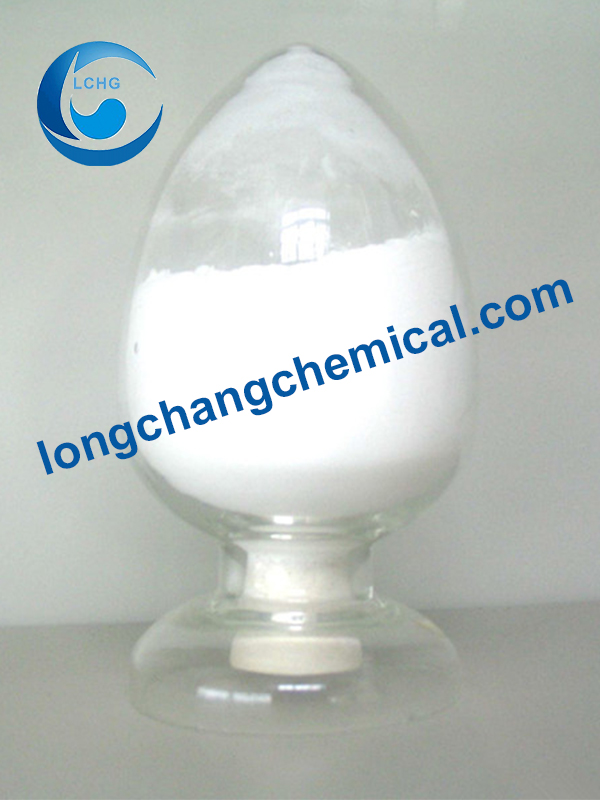Description
Sodium l-ascorbyl-2-phosphate (sodium ascorbyl phosphate) CAS 66170-10-3
Item |
Specifications |
Appearance |
This product is white or off white powder |
Identification |
The infrared absorption spectrum of this product should be consistent with the reference product map of vitamin C sodium phosphate. |
PH value |
8.0~10.0 |
Solution clarification degree |
3% the water solution of the sample should be clarified and almost colorless |
Loss on drying |
≤10.0% |
Heavy metal |
≤0.001% |
Content (C6H6O9Na3P) |
≥98.0% |
Sodium L-ascorbyl-2-phosphate/Sodium Ascorbyl Phosphate (SAP) Usage
1. L-ascorbic acid-2-phosphate trisodium salt can be used as a catalytic substrate for alkaline phosphatase. Alkaline phosphatase (ALP) is an important biomarker whose abnormal expression is associated with many diseases such as breast cancer, prostate cancer, bone disease, diabetes, and liver dysfunction. The quantitative detection of ALP in serum can assist in the diagnosis of related diseases. Spectral analysis has been widely used in ALP detection due to its simplicity and fast response. However, conventional spectroscopy based on a single material and with a single colorimetric or fluorescence output signal has poor anti-interference ability and low accuracy, and is difficult to be used for the detection of targets in complex samples. With the advancement of nanotechnology, a variety of ALP colorimetric sensing methods based on nano-gold and nano-silver have been developed, but the sensitivity of these methods needs to be improved; weak shell changes of core-shell nanoparticles can cause significant changes. The appearance of spectrum and color changes provides the possibility to further improve the sensitivity of colorimetric detection.
2. Studies have provided a two-channel detection method for alkaline phosphatase activity. The principle is that alkaline phosphatase catalyzes the hydrolysis of its substrate L-ascorbic acid-2-phosphate trisodium salt (AAP) to produce reducing ascorbic acid. Ascorbic acid reduces the Torun reagent to generate silver element and deposits on the surface of nano-gold to form Au@AgNPs, which leads to changes in the color and absorption spectrum of the solution; in addition, the generated Au@AgNPs can effectively quench the fluorescence of graphene quantum dots (GQDs). Causes a change in the fluorescence intensity of the solution. Thus, the colorimetric and fluorescent dual-channel measurement of alkaline phosphatase activity can be realized through simultaneous changes in solution color, absorbance, and fluorescence intensity.
3. L-ascorbic acid-2-phosphate trisodium salt can also be used in the preparation of a photoelectrochemical parathion sensor. It belongs to the technical field of new nano-functional materials and biosensors. Firstly, a new type of two-dimensional nano-photosensitive material Mn-MoO3/TiO2@g-C3N4 was prepared. Using the material’s good biocompatibility and large specific surface area, it was loaded with parathion antibody, and then passed through glutaraldehyde. Cross-linking fixes alkaline phosphatase. During detection, alkaline phosphatase can catalyze L-ascorbic acid-2-phosphate trisodium salt AAP to produce L-ascorbic acid AA in situ, and then provide electron donors for photoelectric detection. Reuse of the effect of specific quantitative binding of antibody and antigen on the electron transport ability, so that the photocurrent intensity is correspondingly reduced, and finally a low cost, high sensitivity, good specificity, rapid detection, and simple preparation for detecting parathion-free detection Photoelectrochemical biosensor.
Sodium L-ascorbyl-2-phosphate/Sodium Ascorbyl Phosphate (SAP) Packaging and Shipping
Packing in carton, inner sealed with 1kg*20 aluminium foil bag.
Packing in paper drum, inner sealed with 1kg*20 aluminium foil bag or 20kg plastic bag.
Delivery: Delivery within 2-3 days once receiving the payment.
Sodium L-ascorbyl-2-phosphate/Sodium Ascorbyl Phosphate (SAP) Storage
Sealed and protected from light and has a shelf life of 3 years.
Same series products
Sodium Ascorbyl Phosphate |
66170-10-3 |
Magnesium ascorbyl phosphate |
113170-55-1 |







Reviews
There are no reviews yet.